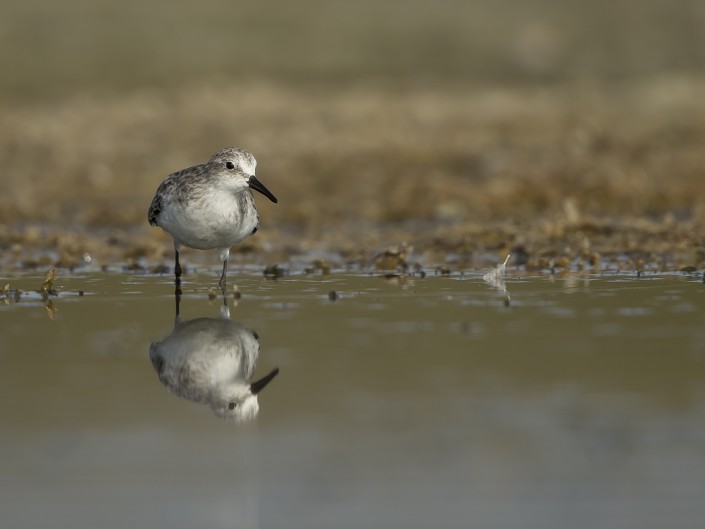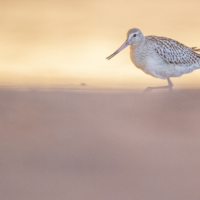This post is also available in: Swedish
Sanderling – Calidris alba
Sanderling – Calidris alba
is a small wading bird. It is a circumpolar Arctic breeder, and is a long-distance migrant, wintering south to South America, South Europe, Africa, and Australia. It is highly gregarious in winter, sometimes forming large flocks on coastal mudflats or sandy beaches. This bird is similar in size to a dunlin, but stouter, with a thick bill. It shows a strong white wingbar in flight, and runs along the sandy beaches it prefers with a characteristic “bicycling” action of its legs, stopping frequently to pick small food items. It eats small crabs and other small invertebrates. In spring, birds migrating north from South America consume large numbers of horseshoe crab eggs in the Delaware Bay area.
Sanderlings feed on invertebrate prey buried in the sand in the upper intertidal zone. In North America, this diet largely consists of the isopods Excirolana linguifrons, Excirolana kincaidii, and the mole crab, Emerita analoga. When the tide is out, these crustaceans live in burrows some way beneath the surface. When the tide comes in, they move into the upper layers of sand and feed on the plankton and detritus that washes over them with each wave. They then burrow rapidly down again as the water retreats. They leave no marks on the surface, so the sanderlings hunt for them by plunging their beaks into the sand at random, consuming whatever they find. Their bills can penetrate only 2 or 3 cm (0.79 or 1.18 in) and as the water swirls around and retreats, the sand is softer; this makes it easier for the birds’ beaks to penetrate further. In the spring, when much breeding activity is taking place in the benthic community, there may be as many as 4000 invertebrates per square metre, but their average size is smaller than later in the year. The birds appear to rush madly around at the edge of the surf, but in reality they are maximising their chances of catching as many prey animals as possible when they are at their most vulnerable near the surface.
It sounds like this
Recording by Ian Cruickshank from Xeno canto
















































